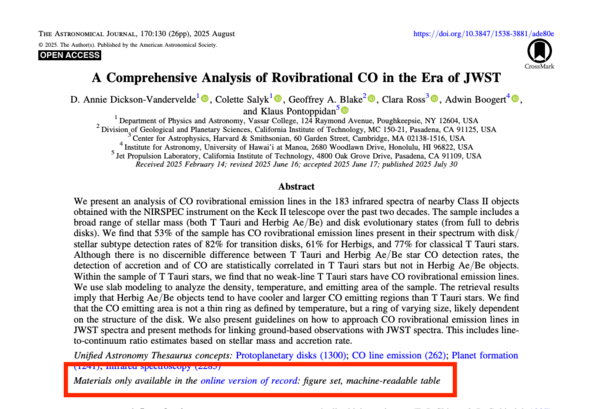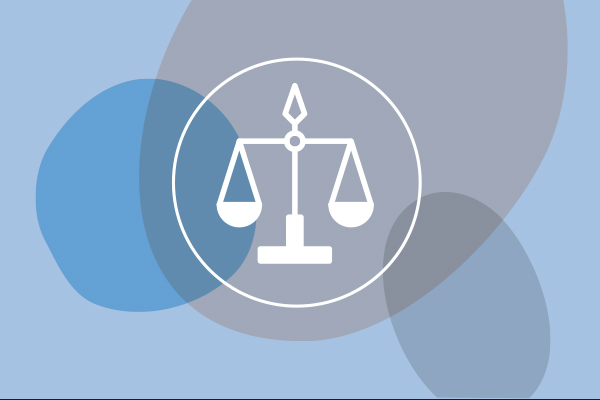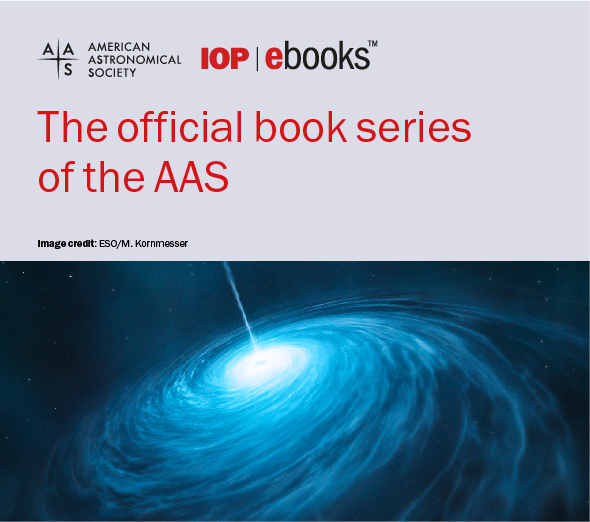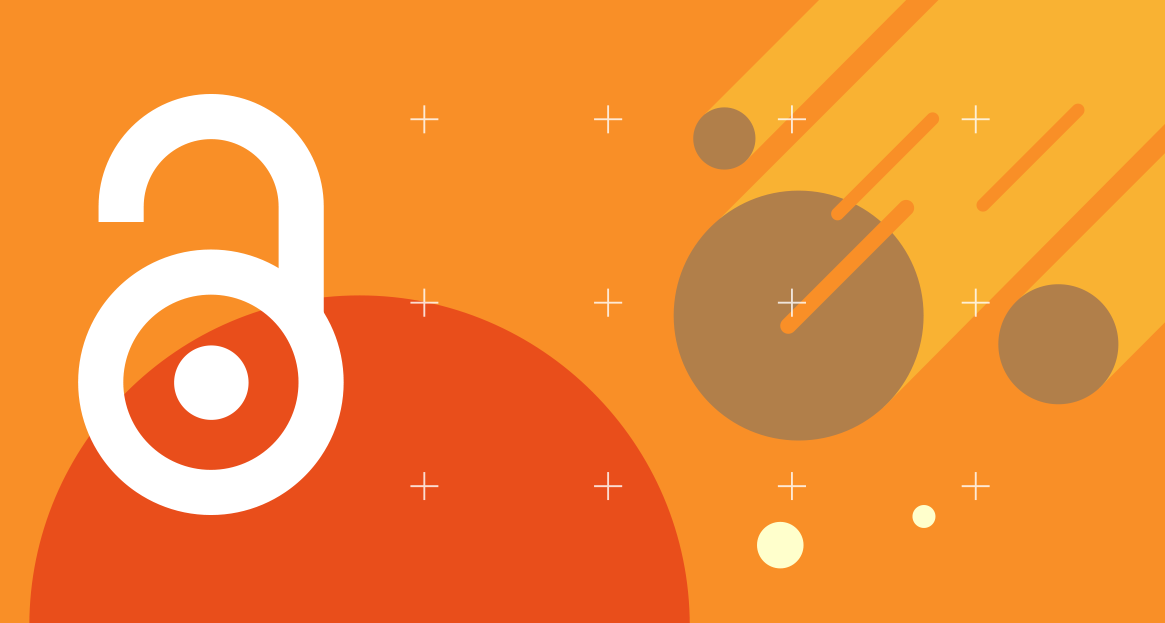Assigning DOIs to data published in the journals
Starting in 2025, we are further enhancing the digital data published in the AAS Journals by giving each contributed dataset or online-only figure a unique digital object identifier (DOI).
Improving data publication in the journals
For over twenty-five years, authors have provided digital data with their AAS journal publications. Beginning with curated machine-readable tables and data-behind-the figures and continuing with interactive graphics such as figure sets and animations, the AAS journals offer many ways to enhance publications beyond what is found in the text.
Since the complete digital publication was deemed the version of record in 2000, such digital assets have never been treated as purely supplemental material — we do not simply publish extra data or PDF files along with the final articles. Instead, we have required these materials to be integrated with the final text, including sharing a single reference list. Further, we hired three PhD AAS Journal Data Editors to curate these materials to make them reusable.
Starting in 2025, we are further enhancing these digital assets by giving each contributed dataset or online-only figure a unique digital object identifier (DOI). These DOIs will allow those digital assets to be individually cited when they are reused by other researchers. We are further creating a single landing page for every article with contributed data or online figures, summarizing the individual digital assets (see Figure 1).
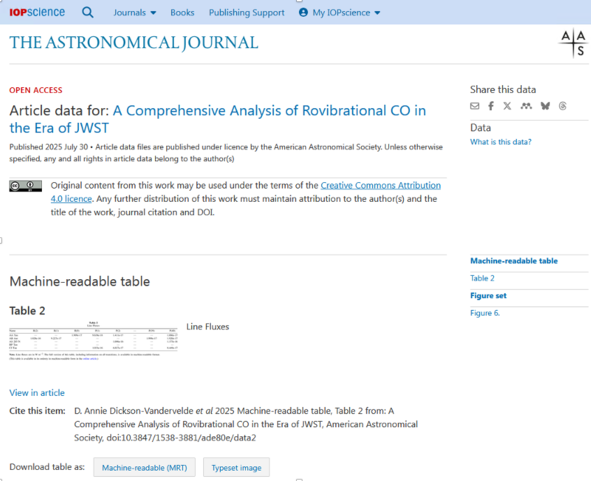
Figure 1: A digital-asset landing page, showing the machine-readable version of Table 2 in this recently published article in AJ. Licensing and citation information are prominently displayed on the landing page.
Rolling out digital-asset DOIs
Going forward from approximately August 2025, all articles that have online-only digital assets will also have a special landing page (see Figure 1), and each digital asset will be assigned a unique DOI. On the landing page, the reader will find specific citation and reuse instructions for each digital asset. We give a brief example of how to cite such digital assets below and give more examples in our updated author instructions.
Between 2000 and 2024, authors published over 20,000 machine-readable tables or figure data and 8,800 interactive figures (e.g., animations, e.g., figure sets, etc.) in the AAS journals. We are planning to add landing pages and individual digital-asset DOIs for these previously published articles in the future.
Citing digital assets
We provide a brief example of how to cite digital assets hosted in the AAS journals. The example focuses on the most critical element in any of such data citation example: the citing of both the original reference article and the specific table or figure used.
To better understand this critical element, we give more examples in the updated AAS journal reference instructions. These additional examples include when a digital asset was reused from the AAS journal article, when a copy of AAS journal-hosted data was reused from another source (e.g., Vizier), and when a dataset related to an article is hosted by a third-party entity such as Zenodo.
AAS journal table citation
This is the most straightforward example based on the new dataset DOIs and the dataset landing page. We reuse the example article from Figure 1. A reader is reusing the machine-readable table for Table 2, which has a dataset DOI in the published article. The resulting dataset citation gives precise information about the source of the data used and leads the reader directly to that data via the dataset citation. It also provides a more precise means to track the reuse of that data.
We used CO (1-0) rovibrational line fluxes published by D.A. Dickson-Vandervelde et al. (2025a) in the original machine-readable format (D.A. Dickson-Vandervelde et al. 2025b, Table 2).
In LaTeX, using ADS bibcodes or dataset DOIs as BibTeX reference keys:
We used CO (1-0) rovibrational line fluxes published by \citet{2025AJ....170..130D} in the original machine-readable format \citep[][, Table 2]{doi:10.3847/1538-3881/ade80e/data2}.
Please see the updated journal reference instructions for additional examples of citing dataset and their reference publications.
Finding online-only data and figures and their DOIs
The new landing pages and digital-asset DOIs can be found from the HTML and PDF versions of the published article. When using the saved PDF article, the data links take you to the HTML article where you can browse to find the specific assets to use or cite. Below are annotated screenshots of the article’s HTML and PDF formats, showing where to find the digital-asset links.
HTML article
The HTML article is the version of record in the AAS Journals. The current layout of the HTML article on IOPScience includes a floating “tab” bar that provides access to specific information on the article’s authors, figures, tables, references, and, finally, article data. The digit-asset landing page, with citation information, is linked off the “Article Data” tab as a “view all hosted data” link (see the annotated image below).
PDF article
The PDF article has descriptions of the online-only data and figures as well as anchor links back to the HTML article on the PDF title page. This description and link are highlighted in the image below. The captions of the corresponding figures and tables also have anchor links back to the HTML article.



